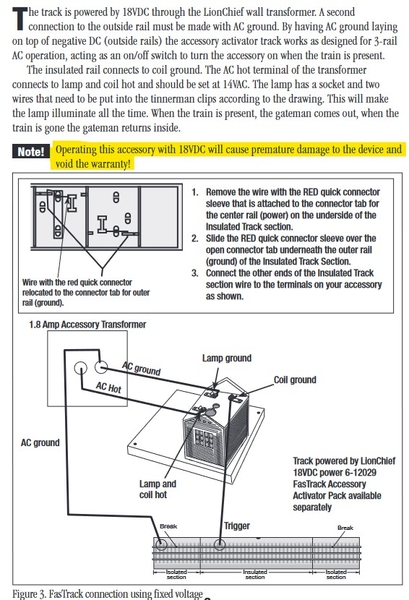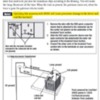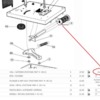Exactly.
I'm curious if anyone has actually measured the gateman solenoid's electrical parameters.  While the instructions say not to use 18V DC, it does not explicitly say it does not work on DC. Obviously, the 18V DC reference is because of the LionChief low-power DC wall-wart. How much AC current does it draw at 14V AC? What is the Ohms/resistance of the coil?
While the instructions say not to use 18V DC, it does not explicitly say it does not work on DC. Obviously, the 18V DC reference is because of the LionChief low-power DC wall-wart. How much AC current does it draw at 14V AC? What is the Ohms/resistance of the coil?
I don't know why the format of this is messed up, but here goes-
At 60Hz, my PW 145 measures-
7.64 + 2.64j ohms with the core out of the coil (man in shed)
7.64 + 7.92j ohms with the core in the coil (man outside)
DCR is about 7.5 ohms
It’s hard to get accurate current readings, the resistance goes up rapidly as the coil heats up. But at 14 volts DC, the current is about 1.9A, at 14 volts AC the current is about 1.3A.
So-
At 14 volts AC, the coil dissipates about 1.3**2 x 7.64 = 13 watts
At 14 volts DC, the coil dissipates 14**2/7.5 = 26 watts.
But-
Raising the DC voltage to 18 volts DC (what the OP’s instruction sheet warns against) gives a coil dissipation of 18**2/7.5 or 43 watts!
Now-
If the DC voltage is lowered to about 9.9 volts DC the coil dissipates 13 watts, the same as the 14 volt AC value. The action of the man is significantly less snappy though; on AC the current is higher when the man is in the shed, due to the lower reactance of the coil (hence higher current) when the core is out of the coil. But there are no reactive effects at DC, so the coil current remains constant regardless of the position of the core.
Obviously, the coil in the modern gateman may be different, but I suspect that the basic situation is the same, unless there are some electronics involved with the coil.











